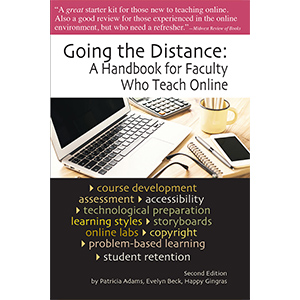Helping Students Overcome Information Overload

 By Bruce A. Johnson, Ph.D., MBA
By Bruce A. Johnson, Ph.D., MBA
When students begin a class they are assigned course materials, resources and a syllabus, along with additional information provided by their instructor. As the class progresses the amount of information that students must process increases as they are assigned additional materials, the instructor provides lectures or online classroom postings, and they gather sources for their class work. Do you expect that your students will be able to effectively sort through all of this information in a way that allows them to participate in the process of learning? Students are expected to acquire the relevant knowledge needed to complete their work, while following policies and meeting the instructor’s expectations. Are you able to recognize when students are overloaded and unable to process what they are receiving? Instructors can assist students by establishing an organized approach to information delivery and encouraging them to utilize active learning techniques.
Often the discussion responses and written assignments offer an opportunity for instructors to gauge whether or not students are reading and comprehending materials and sources received. For example, if students are missing assignment deadlines or not following specific requirements they may not be utilizing the course syllabus. If students are submitting assignments with only a cursory review of their sources that may also be an indicator that they are not effectively comprehending and analyzing what they have read. One of the first challenges for students that are new to a formal learning environment is that they must make a transition from being a passive receiver of information to an active participant. Instead of simply listening to what others have to say they are now required to respond and participate in class discussions. In addition, when students read something that has been assigned or a source they have found on their own through research they must move from passive reading to interactively working with those materials.
At first students may selectively choose how they will process materials received in the class based upon their prior academic experience. If they reach a point where they feel overwhelmed and there is too much to process, or it is beyond their present capability, students may become overwhelmed. When students become frustrated instructors are likely to notice diminished performance and reduced participation. It may be natural for instructors to assume that students aren’t motivated or they aren’t reading the materials provided, which can include feedback given, when in fact those students may simply need additional techniques to improve their reading comprehension or capability to process information. Students may express their concerns or frustrations if they have developed a strong working relationship and open communication with their instructor. Within an online classroom instructors are faced with a greater challenge because they relying on technology to form a bond with their students.
There are several techniques that instructors can choose from to assist their students. From the instructor’s perspective an organized approach to classroom facilitation is essential. At the beginning of the class instructors can review the initial course materials provided and explain the importance and relevance of those materials. Some instructors find it helpful to provide a checklist or a summary of the materials. As the class progresses instructors can provide updates and announcements that offer guidance for students to follow. An online instructor can post a weekly overview message, weekly announcement, or weekly update that summarizes the information students will be working with that week. The need for specific and detailed explanations may depend upon the course level and position of the course within the students’ degree program. A graduate student nearing the end of their degree should be better equipped to work with course materials than a new undergraduate student. Overall, by helping students get organized they will be better able to deal with the required course materials.
From the students’ perspective, instructors can provide tools that assist them with active reading, as a means of improving their reading comprehension. A reading and note-taking method that may improve comprehension is SQ3R, which has students survey, question, read, recite, and review information as they are interacting with it. Instructors can also teach students how to utilize critical thinking skills as it requires them to utilize logic and reasoning. Students can also be introduced to the scientific research process, which shows them a formalized method of inquiry and scholarly writing. The purpose of addressing students’ reading comprehension skills is to help focus their thinking in a way that they transition from passive to active reading, which further influences their participation in the process of learning and knowledge acquisition. When students develop an ability to receive and effectively interact with information throughout the class they are likely to experience improved productivity and responsiveness to their instructor and the classroom environment.
About the Mentor: Dr. Bruce Johnson has had a life-long love of learning and throughout his entire career he has been involved in many forms of adult education; including teaching, training, human resource development, coaching, and mentoring. Dr. J has completed a master’s in Business Administration and a PhD in the field of adult education, with an emphasis in adult learning within an online classroom environment. Presently Dr. J works as an online adjunct instructor, faculty developmental workshop facilitator, and faculty mentor.






